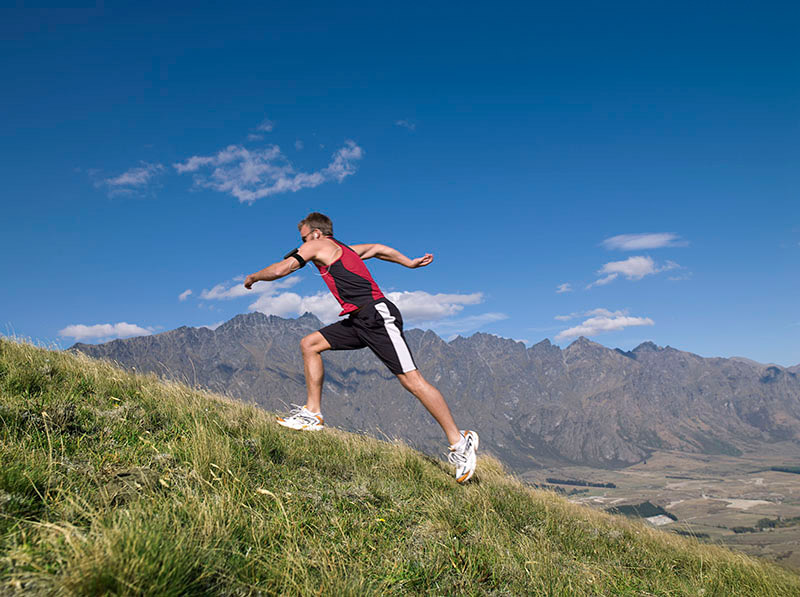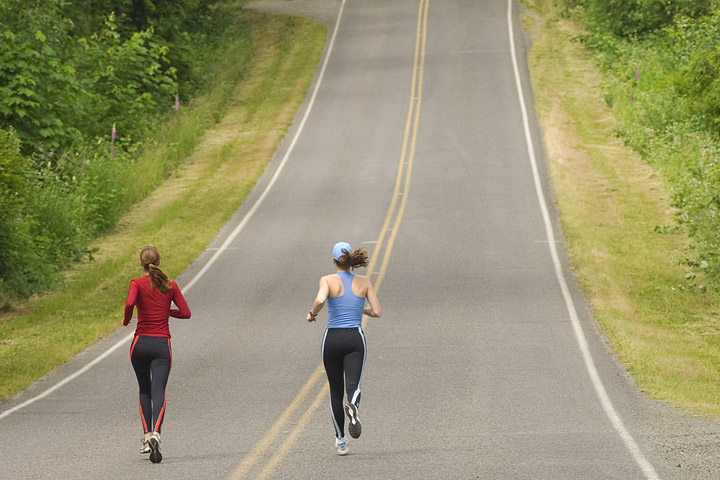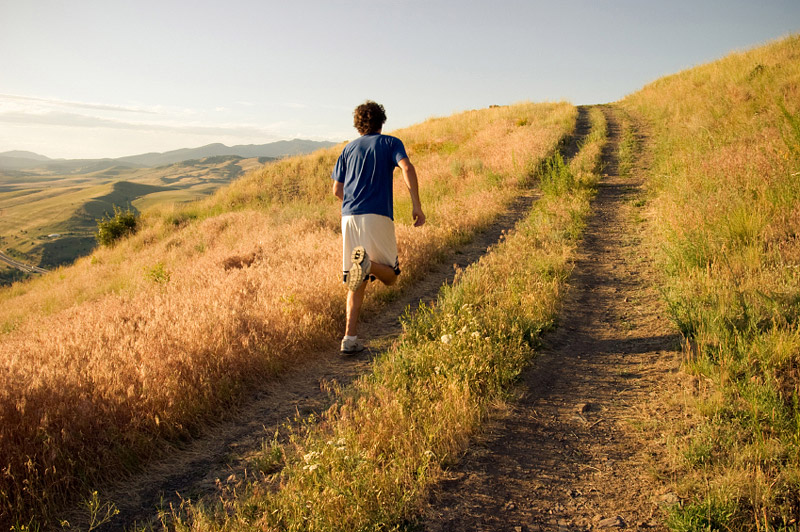
Few things can ruin a good run like turning a corner and facing a towering hill. You were making good time! You were flying along and everything felt great and the robot lady on your running app was whispering excellent numbers into your ear. Now that all comes to an end. You must trudge.
Hills are as much a mental challenge as a physical one. If you fear hills, it’s hard to get better at running them. Maybe you can’t turn off gravity, but you can change the way you think.
Remember That Everybody Is Slow On Hills
This is an especially important point in races, and anytime you’re running with other people. No matter how much you slow down, remember that everyone else is slowing down too. Even the people that have their heads high and look like they’re breathing easy. Those people know how to run hills (and soon you will, too) but gravity applies to them just as it does to you. They are fighting to chug up the hill. They are much slower, now, than they were on the flat a few minutes ago. That’s normal.
So don’t be discouraged that you, too, slow down when you hit a hill. Just like the speedsters are faster than you on the flat, some people will be faster than you on a hill. When people start passing you, you can’t wish yourself stronger. All you can do is use the strength that you have today, however much or how little that might be.
Keep Your Rhythm
You can’t let yourself work harder on the hill than on flat ground. Does that sound impossible? Remember, you’re slower on the hills. You know this, so you’re allowing yourself to go slow. Even embarrassingly slow. (But now that you understand this, you won’t be embarrassed.) You must go so slow that the hill no longer feels difficult.
The easiest way to do this is to listen to the rhythm of your footsteps. When the road starts to slope upwards, keep that rhythm the same, but make your strides smaller. It may feel like you’re only moving by an inch with each step. That’s okay. You’re still moving.

It only takes about ten seconds to gauge whether your steps are small enough. If you’re out of breath, try again: step even smaller. You need to find the place where you’re not working any harder than you would be on flat ground.
What if you’re stepping so small that it would be faster to just walk? There are two answers to this. If you’re in a race, do whatever is faster for the same effort. On very steep hills, that might be walking. But if you’re on a training run where pace isn’t super important, practice running even if you’re slow. That will build the right muscles so someday soon you will be able to run faster.
If you end up walking because you started up the hill too fast, that’s okay.Walking does not mean giving up. Keep up the same effort level as when you were jogging on the flat. Stay strong. Keep climbing.
Don’t Look Up
Now that you’re locked in to the perfect pace, do not look up. Hold your head high, because that’s good running form, but don’t pay attention to the top of the hill. There are two reasons for this.
First, the top of the hill is an illusion. If you pick a spot that looks like the top, and decide your effort will be over when you reach that spot, you’ll find when you arrive that you are not at the top after all.

Second, this isn’t a sprint with a finish line. You chose a pace that feels easy, so you shouldn’t be longing for the stretch to end. I once tried to explain this to my son in terms of the fable about the tortoise and the hare. You don’t want to sprint like the hare, because you’ll get tired, I said. But before I could blurt out some advice about going “slow,” he explained it better than I could. “OK, not rabbit fast,” he said. “I’ll go turtle fast.”
You can go turtle fast forever. It doesn’t matter how far away the top of the hill is. It could be ten paces, it could be ten miles. You’re going, and that’s all that counts. Don’t look up.
Pretend That Hills Are Your Superpower
When you tell yourself that you’re good at hills, it becomes true. Skeptical? Go out and run a small hill this week. Use these techniques and try to make your climb feel easy and great. Now, stick that happy easy hill run into your mental highlight reel. The next time you hit a monster hill, smile. You know hills. You’re good at hills. You’ve got this.

Even with that minimal preparation, you have a real advantage over the hill-phobes: confidence. They fear the hill and stop, walk, feel defeated, feel that they failed. You hit the same hill and slow down, but you are in your element. You are not afraid to keep moving. You respect the hill, but you conquer it.




Leave a Reply